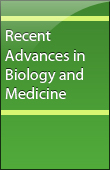


There is growing evidence indicating that drug-resistant bacteria notably Extended spectrum β-lactamases producing Enterobacteria are greatly implicated in immunocompromised groups namely HIV-infected patients. Little is known about the burden of ESPL-E in places where HIV infec- tion is rampant. Therefore, the study was aimed to assess the prevalence, antimicrobial resistance pattern of ESPL-E among HIV/AIDS patients. A cross-sectional study was conducted among HIV/AIDS patients seeking Antiretroviral Treatment (ART) service at the University of Gondar Hospital from February–May, 2017. The pretested and -structured questionnaire was used to collect data on sociodemographic and clinical- related factors. Clean catch midstream urine samples were collected and cultured in line with standard procedures. The drug susceptibility testing was performed by Kirby Bauer disc diffusion method. Extended-spectrum β-lactamase (ESBL) detection was performed using a double- disc synergy test and combined disc methods. Data entry and analysis were performed using SPSS version 20. Among a total of 387 HIV/AIDS patients, 42 (10.9%) Enterobacteria uropathogens were identified. Among these isolates, nine (21.4%) were ESBL producers. The highest preva- lence of ESBL production was Escherichia coli (44.4%) followed by Klebsiella pneumoniae (22.2%) and Enterobacter spp. (22.2%). Higher drug resistance rates were observed among ESBL-producing isolates compared to ESBL-nonproducing isolates. Amox-clavulanic (100%), ampicillin (95%), cotrimoxazole (74%), cefotaxime (88.9%), and ceftazidime (88.9%) had high resistance rates to Extended spectrum β-lactamases pro- ducing Enterobacteria. The overall prevalence of multidrug resistance of all isolates was 92.9%, and all the ESBL isolates were multidrug resistant. Therefore, antimicrobial stewardship programs needed to be promoted for the rational use of drugs especially in the management of HIV/AIDS patients.